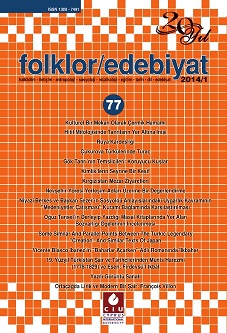Hitit Mitolojisinde Tanrilarin Yer Altina İnişi
Descent to the Underworld of Gods in Hittite Mythology
Author(s): Kurtuluş KıymetSubject(s): Metaphysics, Ethnohistory, Ancient World, Cultural Anthropology / Ethnology
Published by: Uluslararası Kıbrıs Üniversitesi
Keywords: The Hittites; The Hurrians; Descent to the Underworld; Inanna/Ishtar; Teshup;
Summary/Abstract: Goddess Inanna is the most important goddess of the Sümerians. The myths related to her and her husband Dumuzi were written on the tablets for centuries and passed down from generation to generation. Inanna’s reputation also exceeded the borders of Mesopotamia. The prayers about her Shepherd God husband especially affected the Hebrews. Inanna, called Ishtar in Semitic cultures, appeared in the Hittite pantheon through the Hurrians. In Hittite mythology, there are two examples of the motifs in which the descent of the gods–known very well in the Ancient Mesopotamian culture–to the underworld is depicted. One of them is Ishtar/Sha(w)ushka’s, and the other one is Storm God Teshup’s descent to the underworld. The example of Ishtar/Sha(w)ushka originates from the story related to Inanna, the most important goddess of Mesopotamia, and is involved in the magic rituals of MUNUSŠU.GI Allaiturahhi from Mukish. The story of Teshup’s descent to the underworld is included in the Song of Release originating in Syria. Both of the narratives were added to the Hittite culture thanks to the Hurrians. The story about Ishtar/Sha(w)shka’s descent to the underworld was unfortunately preserved very little in Hittite language. Thus, there is not too much possibility of comparing it with the same story of Nippur origin. The myth of Teshup’s descent to the underworld is more detailed and bilingual. It was written in Hittite and Hurrian language. Understood by a magic ritual, the underworld gods were imprisoned to underworld by the weather god. For this reason, Teshup’s descent to the underworld and dining with the underworld gods at the same table is noteworthy. It is not possible to understand the reason as the rest of the text is broken. However, it is possible to speak of a trap designed to eliminate Teshup.
Journal: Folklor/Edebiyat
- Issue Year: 20/2014
- Issue No: 77
- Page Range: 21-34
- Page Count: 14
- Language: Turkish

